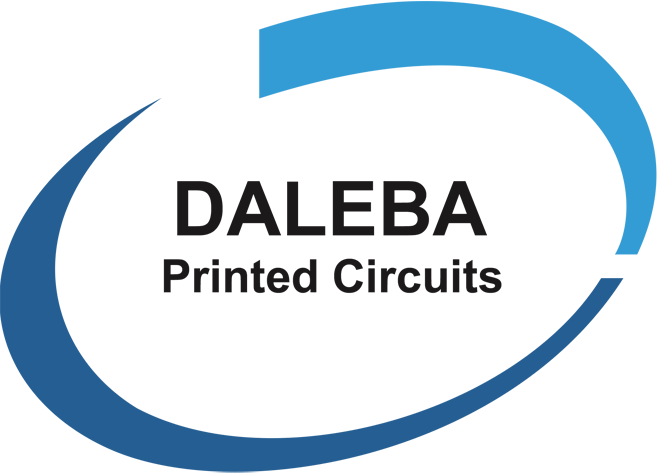
Ceramic PCB - DBC (Direct Bonded Copper)
Ceramic Manufacturing Capabilities document
Disadvantages:
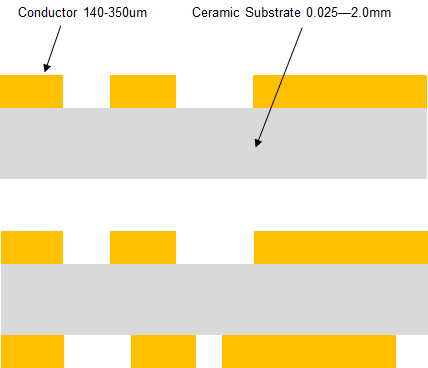
Applications:
Main applications are high power modules, like IGBT, CPV, or any other wide bandgap device modules.
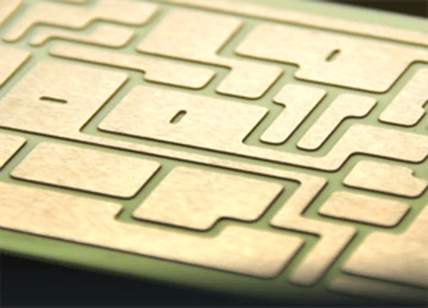
Ceramic PCB - DPC (Direct Plated Copper)
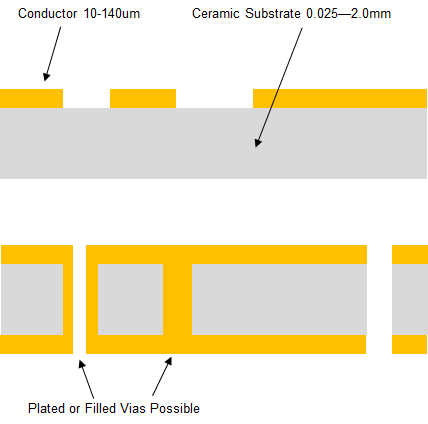
Applications:
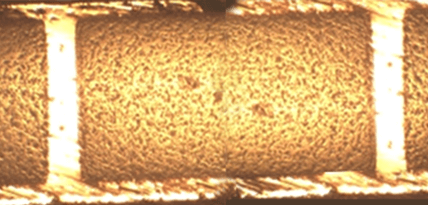
Ceramic PCB - DPC vs DBC
Both DBC and DPC have the same advantages for high power applications, due to the use of a direct bond between Copper and the Ceramic substrate, therefore, the same key attributes for both of them are:
The differences come when looking at the design considerations and applications. DBC being suited to high current capacity, however limited on circuit design. DPC allowing for finer tracks and through hole connection.
Ceramic PCB - AMB (Active Metal Brazing)
AMB Single Sided
Various copper weights are available to meet match substrate thicknesses detailed in the table below. It is recommended the copper thickness on any design is no more than half the ceramic thickness.
AMB double sided
Double sided substrates offer greater mechanical strength and stability enabling Heavy Copper to be offered on thin ceramic substrates. The following is a guide on double sided material availability although during the etching process original copper weights can be reduced.
| Active Metal Brazing Double Sided Panels | ||||||
|---|---|---|---|---|---|---|
| 200µm | 250µm | 300µm | 400µm | 500µm | 800µm | |
| 0.25mm | SiN AlN |
SiN AlN |
SiN | SiN | SiN | SiN |
| 0.32mm | SiN | SiN | SiN | SiN | SiN | SiN |
| 0.38mm | AlN | AlN | AlN | |||
| 0.63mm | AlN | AlN | AlN | AlN | AlN | |
| 1.00mm | AlN | AlN | AlN | AlN | AlN | AlN |
Ceramic PCB - Capabilities
| Property | DPC | DBC |
|---|---|---|
| Compatible Substrates | Al2O3 / AlN / SiN | Al2O3 / AlN / SiN |
| Substrate Thickness (mm) | 0.25/0.38/0.5/0.635.1.0/1.5/2.0 | 0.25/0.38/0.5/0.635.1.0/1.5/2.0 |
| Copper Weight (µm) | 10 - 140 | 140 - 350 |
| Panel Sizes (mm x mm) | Standard: 115 x 115mm Special: Up to 170 x 250mm |
Standard: 115 x 115mm Special: Up to 170 x 250mm |
| Finish Options | ENIG/ENEPIG/EPIG/Immersion Silver/Immersion Tin/OSP | ENIG/ENEPIG/EPIG/Immersion Silver/Immersion Tin/OSP |
| Min Track Width (mm) | 0.1 | Dependant on Cu Weight |
| Minimum Hole Dia (mm) | 0.08 | 0.08 |
| Plated Via Aspect Ratio | 5:1 | N/A |
Ceramic PCB - Thick Film
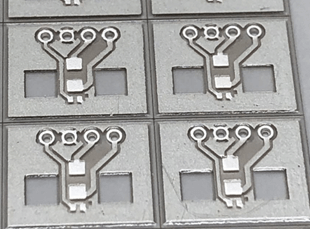
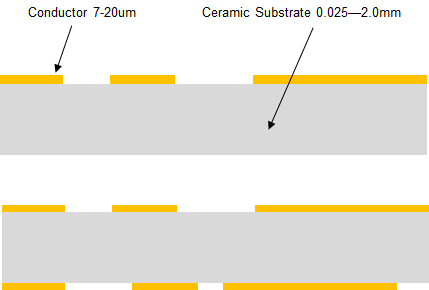
Sign up to receive a monthly PCB newsletter containing the latest information in the world of PCBS including new technology and supply chain information.
Sign up Now